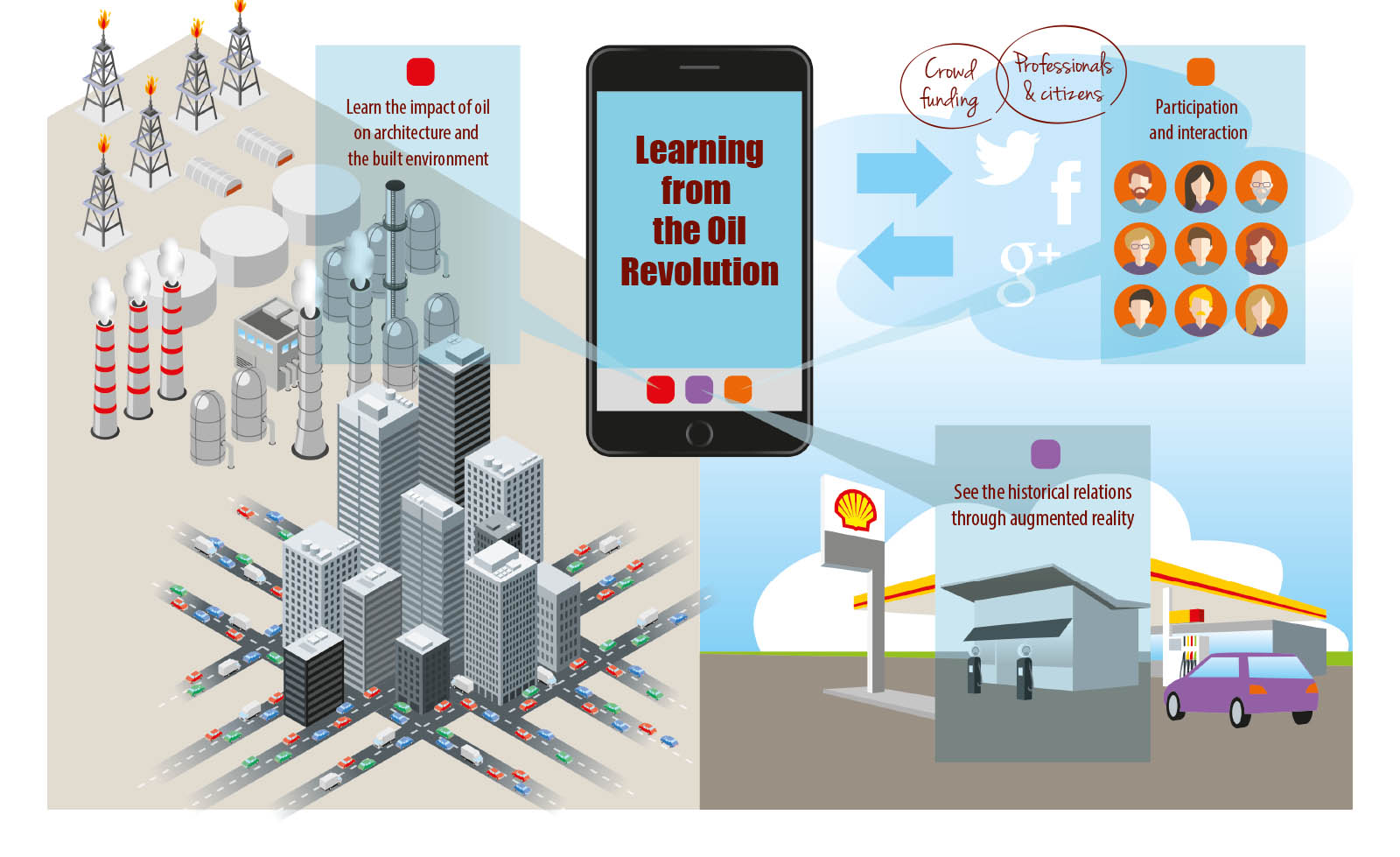Downloads
DOI:
https://doi.org/10.7480/spool.2015.2.968Abstract
This project visualizes the history and current presence of oil in our everyday surroundings in order to facilitate long-term urban sustainability and energy innovation. Designers and citizens around the world want buildings and cities to be more sustainable and ecological.
While their initiatives to reduce energy use are relevant, they often concentrate on individual structures rather than larger global flows, and on technological approaches disconnected from history, society, and culture. They fail to build a new ecological mind-set, a widespread popular culture of sustainability. An older culture already characterizes our cities: petroleum has shaped our modern world. To make a new world, we must first understand the pervasiveness of petroleum; how its production, consumption, and physical and financial flows have shaped cities and rural landscapes such as the Rotterdam/Antwerp area; and how oil companies, governments, and citizens co-constructed an oil-based modern culture over the last 150 years.
This project allows practitioners of the built environment and the general public to map how the petroleum revolution has driven architectural and urban design and how it has shaped both our behavior in and our perception of our cities. We seek to increase popular awareness as a foundation to develop new sustainable solutions.
How to Cite
Published
License
Copyright (c) 2020 SPOOL

This work is licensed under a Creative Commons Attribution 4.0 International License.




